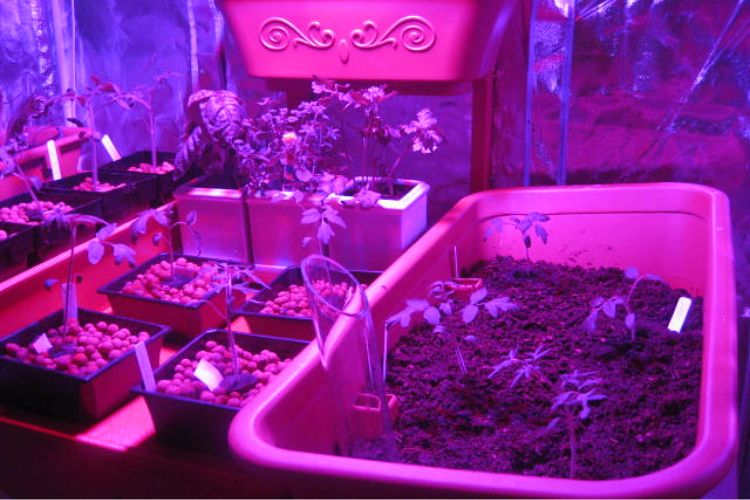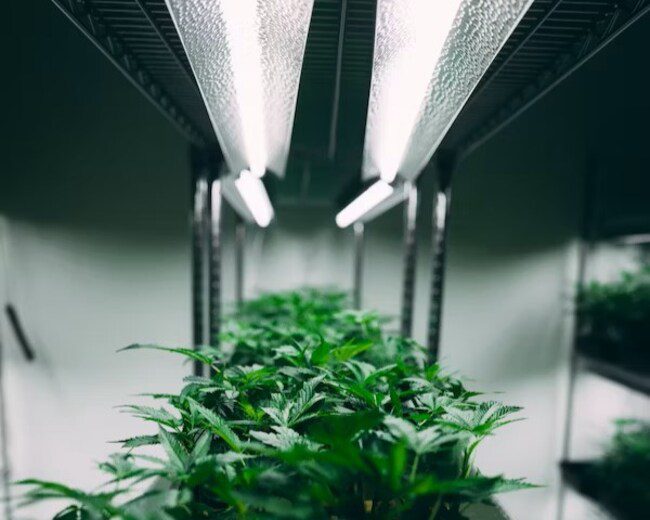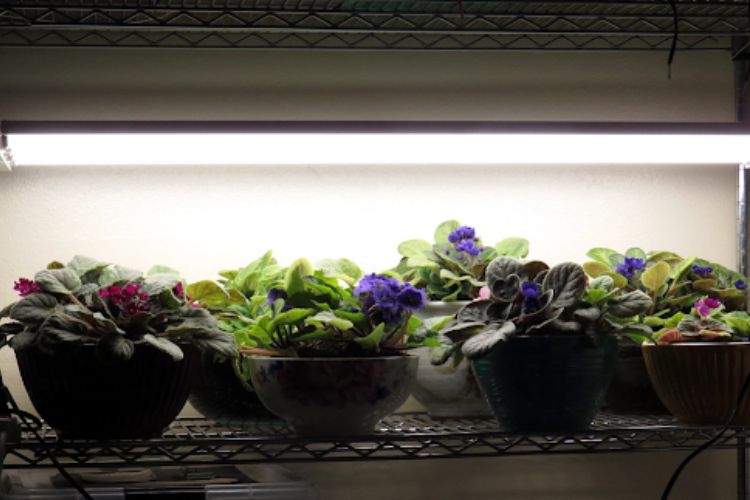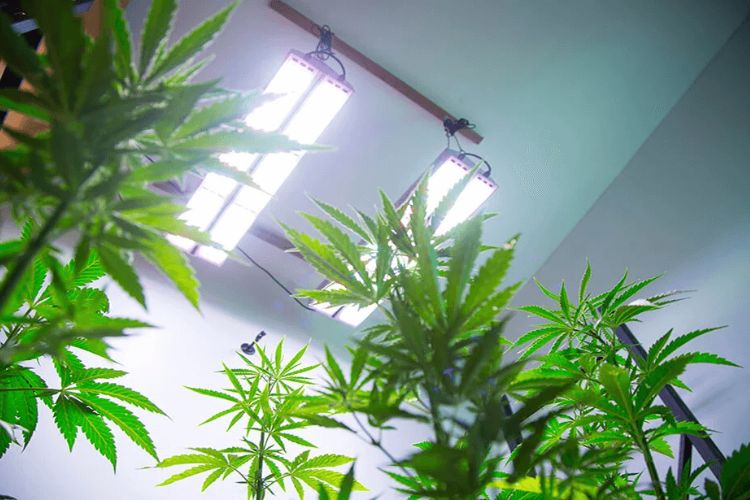What Size Grow Light Do I Need? A Detailed Answer For You

What size grow light do you need? Choosing the right-sized light is essential for gardeners and indoor growers. The reason is that this device directly affects the growth, health, and productivity of your crops.
This detailed guide will dive into the various aspects of selecting the right light size. Specifically, we’ll explore lighting types, such as LED, CMH, and fluorescent, and provide insights into their wattage and coverage.
Read on and discover the perfect light size for your indoor garden!
Why Consider Size Grow Light Important?
The size of the lighting source helps determine the coverage area it can adequately illuminate, which is vital to providing enough lighting energy for your garden. Properly sized lights ensure plants receive the light they need for photosynthesis, healthy growth, and optimal yields. However, lighting coverage may not be sufficient if the lights are too small for the intended growing area. That can lead to excessive light intensity, heat, or energy consumption if your light is too large for the space.
By choosing the right size, you can optimize your indoor growing environment. Hence, you can reduce energy waste, and maintain a balanced and efficient ecosystem for your garden.
What Size Grow Light Do I Need?

The size of grow lights you need depends on factors such as light source, type of plant, and growth stage. As a general guideline, aim for 30-40 watts/square foot for light-intensive plants during flowering and 20-30 watts for leafy greens during vegetative growth.
But to choose the most accurate size, refer to our guide below!
Light source
First, consider the type of light source. Each has different size notes as follows:
HPS and MH bulbs
When determining the size of these two lights for your growing space, you can use the coverage or the wattage method.
Method one: Coverage
The coverage method allows you to calculate the approximate maximum coverage for the commonly used wattages of these two lamps. For example:
- 150 watts for 4 square feet
- 250 watts for 6.25 square feet
- 400 watts for 9 square feet
- 600 watts for 16 square feet
- 1000 watts for 25 square feet
By determining the size of your growing space, such as a tent, you can know which one will cover it best. For example, you can use 150-watt with 25 bulbs or 1000-watt with 4 bulbs to cover the 100-square-foot space. In this case, we recommend the 1000-watt with 4 bulbs option for better efficiency.
Method two: Wattage
If you want to give your plants more light for a higher yield, you can use the second method – the wattage method. This method suggests using 30 – 70 watts/square foot for plants that require a lot of light. In this case, you should aim for at least 50 watts/square foot.
Using the previous example of 100 square feet, at 50 watts/square foot, you would need 5,000 watts to cover the space. In other words, you need 5 bulbs for 1000-watt or 9 bulbs for 600-watt. As can be seen, the wattage method suggests using more lights for better results. So if you want to maximize output, providing additional light beyond the minimum requirement can be beneficial.
CMH bulbs
CMH grow lights have two wattages available: 315 and 630 watts. So it is relatively straightforward to determine the size. To make it easier to understand, you can think of a 315-watt CMH bulb as equivalent to 600 watts of an MH or HPS bulb. Meanwhile, a 630-watt kit is roughly the same as a 1000-watt.
Based on this equivalence, you can estimate the coverage of the CMH bulb. Specifically, a 315-watt bulb can cover an area of 4×4 feet. Meanwhile, a 630-watt bulb is suitable for 5×5 feet. But if you prefer higher intensities, the coverage should be adjusted accordingly.
LEDs
When choosing the size of LED grow light you need, there are three methods you can consider, listed in order from easiest to most accurate:
Method one: Use the coverage area provided by the manufacturer
Many manufacturers offer coverage for their LED grow lights. Yet, it is essential to exercise caution as some manufacturers may exaggerate or provide false information. If possible, consult reliable reviews or find independent information about actual coverage.
Second method: Use the wattage
You typically want 30-40 watts/square foot for plants with high requirements. Yet, note that LED grow light brands often provide real and theoretical power. And we recommend that you use the actual capacity. But finding out this number may need some research to figure out. Hence, you can know if your lighting source meets the amount of wattage needed by multiplying the actual wattage by the area of your space.
Third method: Use outputs
This method is the most accurate but can be difficult due to the lack of available data, especially from some manufacturers. Light output is usually measured in photosynthetic photon flux density or PPFD (umol/m²/s).
We recommend 300 – 600 umol/m²/s in the vegetative phase for optimal results. And in the bloom phase, it should be 600 – 1000 umol/m²/s. Many manufacturers now provide PPFD footprints or PAR charts – showing light intensities at different locations in the coverage area. Thus, look for options that provide an even and sufficient level of PPFD across the entire growing space, including corners.
Fluorescent light
Considering wattage per square foot is critical when using fluorescent grow lights, such as CFLs. Please follow these steps to choose the right size:
Step 1: Determine the power required
Aim for a minimum of 60 watts/square foot for plants with high light needs. Ideally, we suggest aiming for 100 watts/square foot.
Step 2: Consider actual capacity
CFL bulbs usually refer to two wattages on the packaging: the actual wattage the bulb consumes and the incandescent equivalent. Similar to LEDs grow light, it’s vital to focus on actual wattage when determining the number of bulbs needed.
Step 3: Calculate the total power
Next, multiply the desired capacity per square foot by the total area of your growing space. For example, if you have two gardens that take up 2 square feet each, you’ll want 200 watts each or 400 watts total. If your CFL lights are 23-28 watts, you will need 16 bulbs to meet the required wattage (16 bulbs × 25 watts = 400 watts).
Type of plants
The type of plant you are growing plays a role in determining the size of lights you need. Some types of plants, such as green leafy vegetables or herbs, thrive in lower light levels. Meanwhile, fruit trees need higher intensity.
Hence, you will need powerful and large lights to provide enough lighting over the canopy for plants with high needs. For example, you may need a 30-40-watt option if you are growing tomatoes to ensure strong growth and abundant yields. But, if you have lettuce or sprouts, you can use smaller and less intense lights, such as 25-30 watts fluorescent or LED lights.
Growth stages
Finally, the size grow light source also depends on the plant’s growth stage. Specifically, plants require more intensity during the flowering or fruiting phase than in the vegetative stage. Thus, adjusting the size of your device based on the growth stage ensures that plants receive suitable lighting levels for their specific needs. For example, you can use a smaller light with 25 watts/square foot if you grow tomatoes during the vegetative stage. Yet, once the plants enter the flowering stage, they need a stronger one, about 40 watts per square foot.
Should I Use CO2 In A Grow Room?

Using CO2 in the grow room can be helpful for plant growth and yield, especially in larger, well-controlled environments. But it needs careful supervision and precise control to avoid potential risks. Similar to choosing a size for a grow light, you also have to consider the following factors before deciding to implement CO2 supplementation, including the type of plant, room size, environmental condition, and costs.
Plant type
CO2 enrichment mainly benefits plants with high photosynthetic rates and a high demand for carbon dioxide. These typically include fast-growing, high-light-demanding plants such as some fruit trees and flowering ornamentals. Besides, plants that have evolved to thrive in high CO2 environments are more likely to benefit from this gas. So, providing this gas can enhance their overall growth, development, and yield. Providing enough CO2 also allows these plants to optimize their photosynthesis. Hence, they can help increase biomass production and improve flowering.
However, low-photosynthesis-rate plants may not benefit from extra CO2. Examples include shade-tolerant plants, some green leafy vegetables, and some herbs.
Room size
In larger rooms, the air volume is large, allowing for more efficient CO2 distribution. Also, the increased space reduces the risk of CO2 concentration build-up and ensures a more even distribution over the entire area. This feature is vital because plants grown in larger rooms with larger canopy areas need enough CO2 for optimal photosynthesis.
In contrast, smaller grow rooms have limited air volume. Hence, CO2 concentrations are higher and potentially affect plant health if CO2 supplementation is not managed carefully. Thus, it becomes more challenging to maintain proper CO2 concentrations in confined spaces, and the risk of CO2 accumulation or fluctuations increases.
Therefore, while this gas can benefit small and large grow rooms, it must be carefully considered and adjusted based on the space size.
Note: Proper ventilation, monitoring, and control systems are vital to ensure the efficient and safe use of CO2 in any growing room, regardless of size.
Environmental control
Environment control means controlling your grow space, including warm temperature, moderate humidity, and adequate ventilation when using extra CO2.
Temperature
The absorption and assimilation of CO2 by plants are directly influenced by temperature. Specifically, warmer temperatures generally increase the plants’ metabolic rate and the need for CO2. Thus, maintaining an optimal temperature level in the growing room is essential to maximize the benefits of CO2 supplementation.
Humidity
High humidity can limit a plant’s CO2 absorption by reducing the stomatal opening required for CO2 absorption.
Ventilation
Adequate ventilation is necessary to maintain proper air circulation, prevent CO2 bags from stagnation, and avoid the possibility of CO2 accumulation. Good ventilation helps distribute this gas evenly throughout the growing room and facilitates gas exchange for photosynthesis. Also, it helps regulate temperature and humidity, promoting plant health and growth. Without proper environmental control, the effectiveness of CO2 enrichment can be affected, and the risk of imbalance or adverse effects on plants increases.
Cost and equipment
The addition of CO2 requires investment in equipment and ongoing operating costs. Initial costs include:
- CO2 generator or tank
- Regulator
- Remote control
- Sensor
We recommend considering the availability and compatibility of these device options when deciding to use CO2. It is critical to choose reliable and suitable equipment that meets the requirements of the growing room size and environmental conditions.
In short, you should weigh the potential benefits versus the investment and the ongoing costs associated with CO2 enrichment. This process helps determine if using CO2 in the grow room is economically viable and practical.
Conclusion
After our guide, we hope you get the answer to the wondering “What size grow light do I need?” By considering factors such as plant type, growth stage, area of cover, and intensity requirements, you can determine the appropriate wattage and coverage of the grow lights needed. Besides, regularly evaluate and adjust your lighting setup as your plants progress through different growth stages.
With the right lights, you can create an ideal environment that promotes vigorous plant growth, high yields, and horticultural success. Thank you for reading!
FAQs









